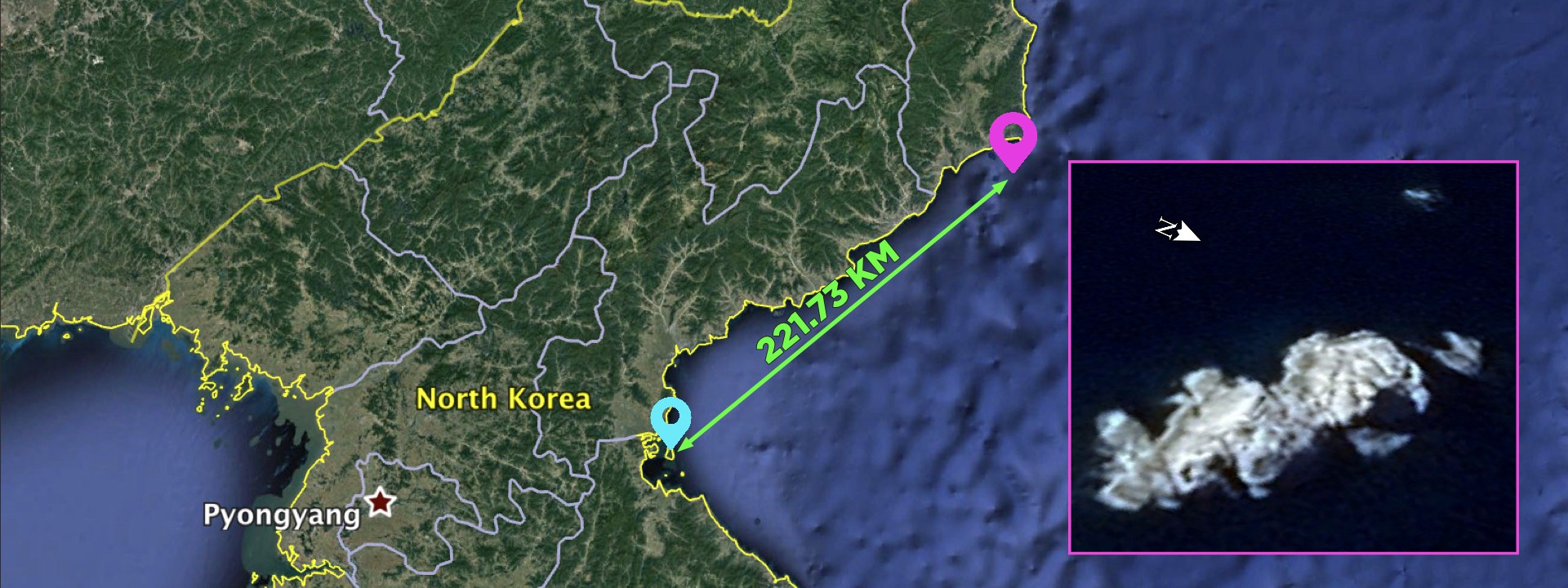Iskander Look-Alikes in North Korea
Photos shared by North Korea reveal more details about the May 4 missile test
Iskander Look-Alikes in North Korea

Photos shared by North Korea reveal more details about the May 4 missile test

A missile successfully launched by North Korea during its latest missile drills in early May 2019 showed close resemblance to the Russian-manufactured Iskander short-range ballistic missile.
Open source analysis suggested uncanny resemblance of the tested missiles to the Russian produced Iskander missiles. Russia has been trying to sell the missiles for years, including war-torn Syria. Such resemblance raised questions of possible Russian military cooperation with North Korea.
On May 4, 2019, North Korean leader Kim Jong Un personally supervised the launch of several ballistic missiles to the Sea of Japan. The launch was part of a series of successful live firing drills of long-range multiple rocket launchers. South Korea expressed public concern that the drills violated the inter-Korean agreement to cease all hostilities in the peninsula.
Images and reports of the launch started to appear on various media outlets and social media platform on May 5. One of the missiles shown by North Korean state media appeared to be the new short-range missile that previously appeared in Pyongyang’s February 2018 military parade. This new missile appeared similar to the Russian 9K720 Iskander mobile short-range ballistic missile system. While the launched missile also had some similarities to weaponry produced by Ukraine and South Korea, open-source research suggested that it nonetheless resembled the Russian-made model more closely.
The DFRLab analyzed the photos of the testing grounds released by North Korean media to see what additional information could be found in open source materials.
The Launch
The successful launch reportedly provided Kim Jong Un with “great satisfaction,” and, after the drills, he urged North Korean troops to stay on high alert. North Korean media outlets provided only limited images from the launch, and no video footage has surfaced as of the time of this research. Reverse image search did not provide any reason to doubt the authenticity of the images. The launch of the missile was also captured on satellite imagery, clearly revealing the launch point on the Hodo Peninsula in North Korea.

Furthermore, the exhaust fumes showed the trajectory of the launched missile.
CNN Exclusive: New satellite image shows Friday rocket launch by North Korea of what is likely a short-range missile, according to analysis by @ArmsControlWonk https://t.co/pCcP2BzoFT pic.twitter.com/5oJEe5XH79
— Jim Sciutto (@jimsciutto) May 6, 2019
One of the published photos depicted the moment the missile hit its target, which appeared to be a rock formation somewhere in a large body of water. The same rock was also seen on a screen behind Kim Jong Un, who was observing the exercise. The rock formation in the photographs closely resembled a formation near the northern shores the country.

This rock formation was approximately 220 kilometers away from the missile launch, which was also the distance of the missile flight as approximated by the South Korean intelligence service. The exhaust fume trail was not long enough for the DFRLab to estimate accurately the projection of the missile, but what was visible of the trail did not contradict the geolocated area.

The Missile
Online observers noted the high similarity of the launched short-range missile to the Russian-produced 9K720 Iskander mobile short-range ballistic missile system. Several photos showed the silhouette of the missile, which the DFRLab then compared with the available Iskander imagery. The silhouette appeared to be a near identical match to the Iskander missile, including the missile tail fins. The range of the Iskander missile covers targets from 50 to 500 kilometers, and the range of the tested missiles fits these parameters as well.
Other researchers compared the launched missile to two more visually similar weapons: the Hyunmoo-2, fielded by South Korea, and the Ukrainian Grom.

Yet judging from the limited available images, the resemblance with Iskander is the most striking.

The Korean regime had showcased the same model during the military parade in February 2018. No prior instances of this missile being tested had been previously recorded.

The main difference observed between the launched missile and those showcased in the military parade was the missile launch vehicle. The vehicles paraded in Pyongyang were likely North Korean made, while the vehicle used during the military drills more closely resembled the Russian 9P78–1 launch vehicle.

North Korea’s May 4 missile launch came as a surprise to the international community, in light of the country’s leader Kim Jong Un’s hints toward willingness to cooperate on nonproliferation in peace talks. Open-source data allowed the DFRLab to verify that the launch was successful, as well as to confirm that the missile employed was very similar to the Russian-produced Iskander model.
This missile test came only weeks after Russian President Vladimir Putin officially met Kim Jong Un for the first time. Open-source evidence was insufficient to prove any direct connection between Russia and the North Korean missile program, but it pointed toward a possible source for the missile system.
The DFRLab will continue to monitor Russian military operations and developments around the world.
Register for the DFRLab’s upcoming 360/OS summit, to be held in London on June 20–21. Join us for two days of interactive sessions and join a growing network of #DigitalSherlocks fighting for facts worldwide!

